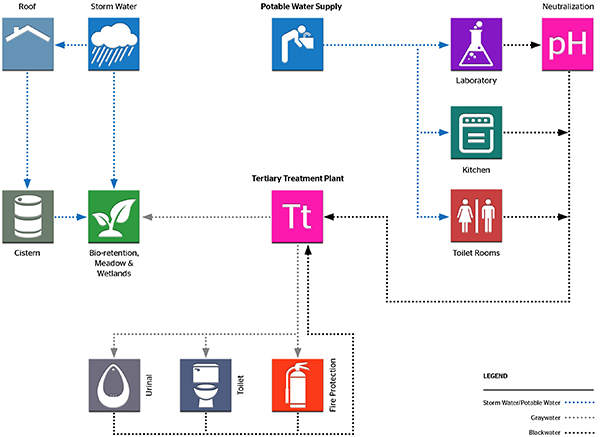The Smithsonian Environmental Research Center (SERC) studies coastal ecosystems and their change and has been on the forefront of climate studies for over 30 years. Their research addresses global climate change, the effects of nutrients and chemicals passing through our landscapes, maintenance of productive fisheries, changes to our environment from biological invaders and protection of fragile wetlands and woodlands.
When we began designing SERC’s Mathias Lab, our analysis of the physical ground truth and the programmatic needs of the lab began by revisiting our master plan for SERC’s entire 2,650-acre campus in Edgewater, Maryland. This largely undeveloped site is the platform for much of SERC’s research and the home of all of its laboratory facilities. As we studied daily activities and began to understand how SERC works, we noticed that water represents a critical resource:
- Research buildings produce a significant amount of waste water, primarily a result of the manufacture of RO/DI water for lab use.
- The hazards related to lab activity and the storage of specimens in alcohol requires significant amounts of water for fire suppression.
The design team wondered if the waste stream from labs and other buildings could be treated on site and stored for use for fire protection systems. By calculating the sprinklers anticipated during the next 25 years, we were able to determine a total capacity of water to be stored. We then speculated that this resource could be put to use, since water would be constantly consumed on site, treated to a tertiary stand, but (hopefully) rarely used for fire protection.
Our resulting design anticipates a cycle of water use, treatment, and reuse at SERC. Fresh water supplies sinks and showers across campus; while treated water flushes toilets, irrigates the landscape and serves sprinkler systems in buildings. We were able to reduce potable domestic water use by 60% when compared to a typical lab, and treated gray water supplies all of the onsite needs for irrigation.



Recent Comments